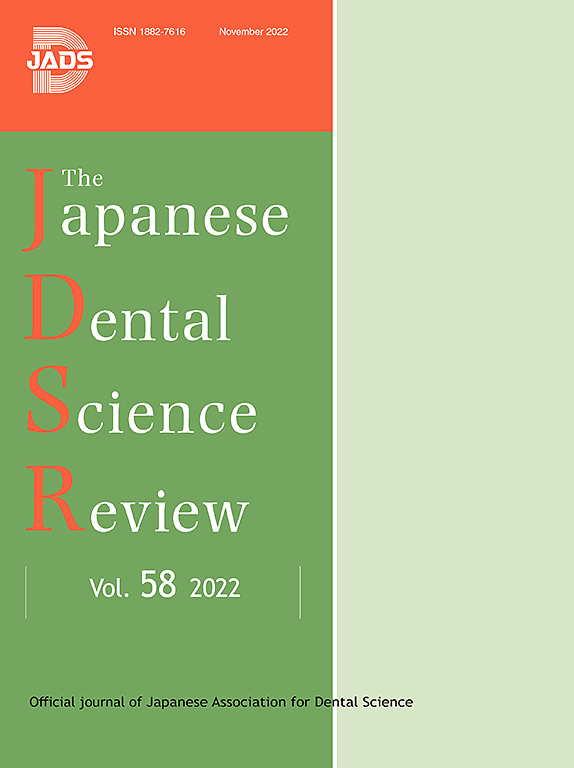Multifaceted characterization of antibacterial resin composites: A scoping review on efficacy, properties, and in vivo performance
IF 6.6
2区 医学
Q1 DENTISTRY, ORAL SURGERY & MEDICINE
引用次数: 0
Abstract
This scoping review aimed to collect, analyze, synthesize, and interpret the current data concerning antibacterial resin-based composites. The study followed the recommendations of the Joanna Briggs Institute and PRISMA Extension for Scoping Reviews. The searches were conducted in the PubMed, Embase, Web of Science, and Scopus databases. Studies evaluating efficacy, physical and chemical properties, cytotoxicity, and preventive effect against recurrent caries lesions provided by antibacterial resin-based composites published in the last 5 years and without language restriction were included. Fifty-three papers were analyzed. Only in vitro, in situ, and animal studies were published. The DMAHDM (dimethylaminohexadecyl methacrylate) was the most prevalent antibacterial agent in the resin composites and showed efficacy, did not increase cytotoxicity, nor jeopardize chemical and physical properties. The most used biofilm model and the test to evaluate the antibacterial effect was Streptococcus Mutans and the Colony Forming Unit Count. Antibacterial resin-based composites have performed exceedingly well in the large number of in vitro studies evaluated. However, clinical trials assessing the prevention of recurrent caries are absent and need to be further conducted to assure that using an antibacterial resin composite is a valid way to avoid restoration replacement due to recurrent caries.
抗菌树脂复合材料的多方面表征:对其功效、性能和体内性能的综述
本综述旨在收集、分析、合成和解释目前有关抗菌树脂基复合材料的数据。这项研究遵循了乔安娜布里格斯研究所和PRISMA扩展范围审查的建议。检索在PubMed、Embase、Web of Science和Scopus数据库中进行。本文纳入了近5年来发表的无语言限制的抗菌树脂基复合材料的疗效、理化性质、细胞毒性和预防龋齿复发作用的研究。分析了53篇论文。仅在体外、原位和动物研究中发表。DMAHDM(二甲氨基十六烷基甲基丙烯酸酯)是树脂复合材料中最常用的抗菌剂,具有良好的抗菌效果,不会增加细胞毒性,也不会损害化学和物理性能。最常用的生物膜模型和评价抗菌效果的试验是变形链球菌和菌落形成单位计数。抗菌树脂基复合材料在大量体外研究中表现非常好。然而,临床试验评估预防复发性龋齿缺乏,需要进一步进行,以确保使用抗菌树脂复合材料是一种有效的方法,以避免因复发性龋齿而更换修复体。
本文章由计算机程序翻译,如有差异,请以英文原文为准。
求助全文
约1分钟内获得全文
求助全文
来源期刊

Japanese Dental Science Review
DENTISTRY, ORAL SURGERY & MEDICINE-
CiteScore
9.90
自引率
1.50%
发文量
31
审稿时长
32 days
期刊介绍:
The Japanese Dental Science Review is published by the Japanese Association for Dental Science aiming to introduce the modern aspects of the dental basic and clinical sciences in Japan, and to share and discuss the update information with foreign researchers and dentists for further development of dentistry. In principle, papers are written and submitted on the invitation of one of the Editors, although the Editors would be glad to receive suggestions. Proposals for review articles should be sent by the authors to one of the Editors by e-mail. All submitted papers are subject to the peer- refereeing process.
 求助内容:
求助内容: 应助结果提醒方式:
应助结果提醒方式:


